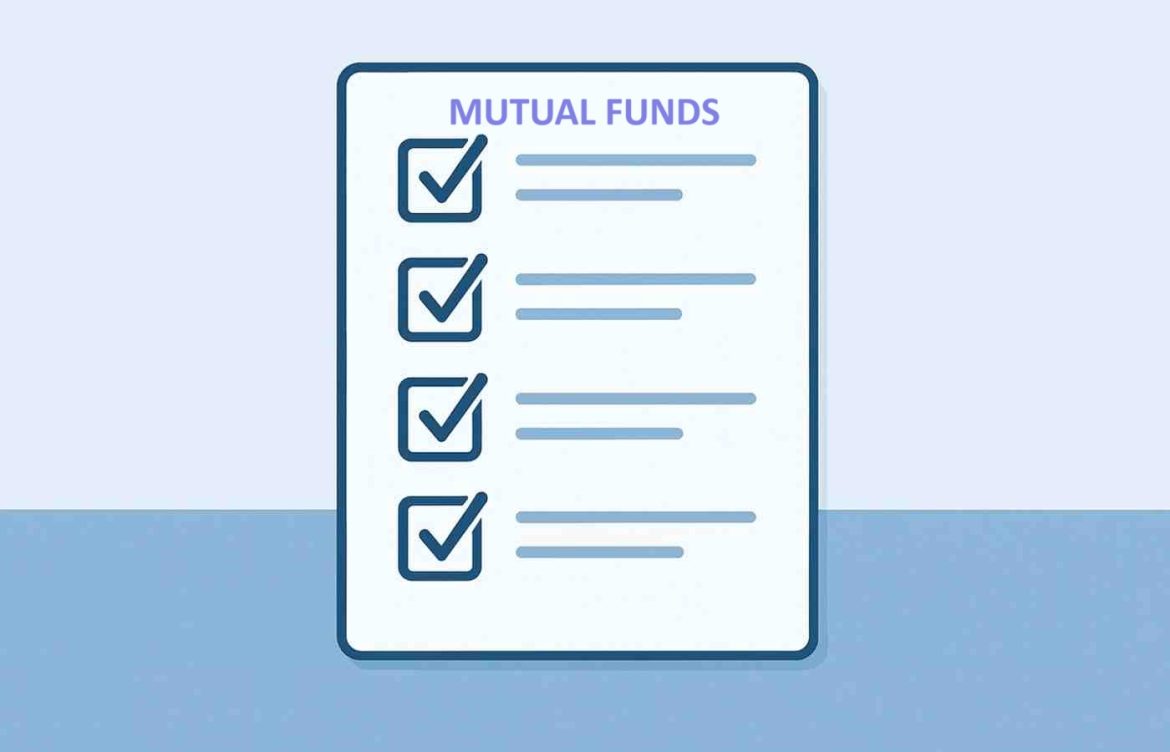
How to Choose Your First Mutual Fund: A 7-Point Checklist for Retirement Investors
How to Choose Your First Mutual Fund: A 7-Point Checklist for Retirement Investors
Planning for retirement is not simply about saving money—it is about investing it wisely to ensure that your wealth grows steadily over time. For many first-time investors in India, mutual funds often appear as a straightforward yet flexible option. But when you are choosing a mutual fund for the first time, the sheer variety of schemes can feel overwhelming. Should you pick an equity fund or a hybrid fund? Is a systematic investment plan (SIP) better than a lump sum? How do you know which category aligns with your retirement needs?
Thank you for reading this post, don't forget to subscribe!This guide offers a structured 7-point checklist designed specifically for individuals who want to understand how to invest in mutual funds for retirement. Whether you are looking for the best mutual funds for beginners or simply exploring a beginner’s guide to mutual funds, the points below will help you make informed decisions.
1. Define Your Retirement Goals Clearly
Before exploring mutual fund categories, begin with clarity about your retirement goals. Do you plan to retire early and travel, or would you prefer to continue a modest lifestyle with financial security? Your goals will directly influence the type of funds you should consider.
For instance, if you are in your 30s and have 25–30 years before retirement, equity mutual funds could be appropriate because they allow your investments to grow over the long term, despite short-term volatility. Conversely, if retirement is just 10 years away, debt-oriented funds or balanced hybrid funds may suit you better, as they reduce market risk.
In short, always anchor your investment choice to your retirement horizon and the lifestyle you envision.
2. Understand the Basics of Mutual Fund Categories
A beginner’s guide to mutual funds cannot be complete without explaining their categories. Broadly, mutual funds in India fall under three main buckets:
- Equity Funds: Invest primarily in stocks; suitable for long-term growth.
- Debt Funds: Invest in fixed-income securities such as government bonds and corporate debt; suitable for stability and predictable returns.
- Hybrid Funds: Combine equity and debt, striking a balance between growth and safety.
For retirement-focused investing, the right mix of these categories depends on your age and risk appetite. Younger investors often start with equity exposure and gradually shift towards debt or hybrid funds as retirement nears.
3. Decide Between SIP and Lump-Sum Investment
One of the most common dilemmas for those choosing a mutual fund for the first time is whether to invest a lump sum or start with a SIP.
- Systematic Investment Plans (SIPs) allow you to invest a fixed amount regularly (monthly or quarterly). SIPs encourage discipline and reduce the risk of investing at the wrong time, as they average out the cost of units.
- Lump-Sum Investments involve investing a large amount at once. This approach may work for individuals with significant surplus funds, but it exposes them to higher market timing risks.
For retirement investment for beginners, SIPs are often considered a more practical and less stressful approach. They are also easier to align with monthly budgets.
4. Assess the Fund’s Past Performance, but Look Beyond It
When exploring the best mutual funds for beginners, past performance is often the first thing investors check. While historical returns provide a benchmark, they should not be the only deciding factor.
Evaluate the fund manager’s track record, consistency across market cycles, and the fund’s volatility. For example, a fund that shows slightly lower average returns but demonstrates stability in volatile markets may serve retirement goals better than a high-return but highly volatile option.
Additionally, compare the fund’s performance with its benchmark index and category peers. This comparison gives you a realistic idea of how well the fund is managed.
5. Pay Attention to Costs: Expense Ratio and Exit Load
Costs matter in mutual funds because they directly affect your net returns. Two key charges to be aware of are:
- Expense Ratio: This is the annual fee charged by the fund house for managing your money. A lower expense ratio can significantly improve long-term returns.
- Exit Load: Some funds charge a penalty if you redeem your investment before a specified period. Always check the exit load terms, especially if you might need flexibility in accessing your funds.
For long-term investors focused on retirement, even small differences in expense ratios can compound into large amounts over decades.
6. Align the Fund with Your Risk Tolerance
Risk tolerance varies from one individual to another. Some people are comfortable with market fluctuations, while others prefer stability. When choosing a mutual fund for the first time, assess how much risk you can genuinely handle without panicking during market downturns.
For instance, if you are a conservative investor, debt mutual funds or balanced hybrid funds may be appropriate. On the other hand, if you can withstand volatility and have a long retirement horizon, equity mutual funds may help you accumulate higher wealth.
A useful exercise is to ask yourself: Would I be comfortable staying invested if my portfolio temporarily lost 15–20% of its value? Your answer will guide you toward the right category.
7. Diversify, but Keep It Simple
Diversification is essential in retirement planning. Investing across different types of mutual funds helps spread risk. However, beginners often make the mistake of over-diversifying by investing in too many schemes with overlapping portfolios.
Instead, aim for a balanced portfolio of 3–4 mutual funds that complement each other. For example, one large-cap equity fund, one hybrid fund, and one short-term debt fund can together provide growth, balance, and stability.
Remember, simplicity is key—especially when you are still learning how to invest in mutual funds for retirement.
Additional Tips for First-Time Investors in India
- Use Trusted Platforms: Invest through SEBI-registered distributors, financial advisors, or reliable online platforms.
- Tax Implications: Be aware of tax rules related to mutual funds in India. For example, equity funds held for more than one year qualify for long-term capital gains tax with certain exemptions.
- Stay Disciplined: Retirement investing is a long journey. Avoid reacting impulsively to market movements. Consistency matters more than timing.
Conclusion
Choosing your first mutual fund for retirement does not have to be daunting. By following this 7-point checklist—defining your goals, understanding fund categories, selecting the right investment mode, analyzing costs, and aligning with your risk profile—you can build a portfolio that grows steadily and supports your financial security in later years.
For beginners, mutual funds are not just investment products; they are tools that help translate long-term retirement aspirations into achievable outcomes. Start small, stay consistent, and let time work in your favor.
Related Blogs:
Beyond Fixed Deposits: Why Mutual Funds Are Superior for Long-Term Investment Goals
Top 3 Retirement Investment Options in India Compared
What is the Employee Pension Scheme
How to Use Mutual funds and ETFs for Instant Portfolio Diversification
NPS (National Pension System): A Tax-Saving Retirement Tool
The Digital Dividend: Why Indian Ed-Tech Companies are Attracting Capital?
Best Education Stocks in India
The Evolution of Learning Models and Their Impact on Education Stocks in India
Education ETFs & Mutual Funds in India: An Alternative to Direct Stock Investing?
Diversifying with Education Stocks: A Strategic Move for Your Investment Portfolio?
Top 5 Education Stocks in India
AI & Machine Learning in Education: Investing in the Stocks Revolutionizing Learning
Diversifying Your Portfolio with India’s Steel Sector
Build a Stronger Investment Portfolio Through Diversification
Portfolio Diversification in Cyclical Industries: Balancing Risk and Reward with Auto and Travel Stocks
Diversifying Your Portfolio with Defense Stocks: A Strategic Move?
Building a Diversified Investment Portfolio with Limited Funds
How Do Asset Allocation and Diversification Work Together?
Disclaimer: This blog post is intended for informational purposes only and should not be considered financial advice. The financial data presented is subject to change over time, and the securities mentioned are examples only and do not constitute investment recommendations. Always conduct thorough research and consult with a qualified financial advisor before making any investment decisions.

